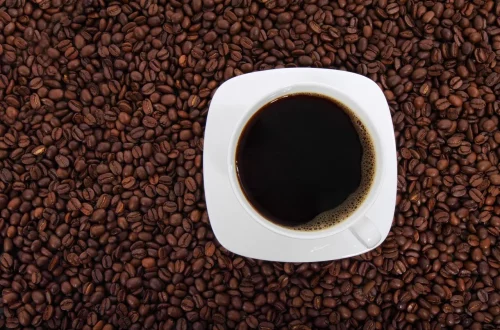
Understanding the Impact of Teenager Nipple Slips in Media and Society
The discussion surrounding media representation and its impact on societal norms is increasingly relevant in today’s digital age. The portrayal of youth in various forms of media, from television shows to social media platforms, has a profound impact on societal perceptions and attitudes. Among these portrayals, the topic of teenager nipple slips has gained attention, sparking conversations about body image, sexuality, and the implications of unintended exposure in a hyper-connected world.
With the advent of social media, images and videos can go viral in an instant, often leading to public scrutiny and debate. Teenagers, who are in a formative stage of their lives, are particularly vulnerable to the effects of such exposure. The media landscape has evolved dramatically, leading to a complex interplay between personal expression, privacy, and the societal standards that govern acceptable behavior.
Understanding the underlying factors that contribute to the discussion of nipple slips among teenagers requires a nuanced approach. It is essential to consider the cultural context, the role of media in shaping perceptions, and the implications for young individuals navigating their identities in a world that often prioritizes sensationalism over sensitivity. As we delve into this topic, we will explore the various dimensions of teenager nipple slips in media and society.
The Cultural Significance of Body Image in Adolescence
Body image plays a critical role in the development of self-esteem and identity during adolescence. Teenagers are often bombarded with messages about physical appearance from various sources, including social media, advertising, and peer interactions. These influences can create a distorted perception of what is considered attractive or acceptable, leading to anxiety and insecurity.
In many cultures, there is an emphasis on idealized body types, which can manifest in unrealistic beauty standards. As adolescents strive to conform to these standards, they may feel pressured to showcase their bodies in ways that align with media portrayals. This pressure can lead to a heightened sense of self-awareness and, in some cases, result in behaviors that prioritize external validation over personal comfort.
The phenomenon of nipple slips among teenagers can be seen as a reflection of this cultural landscape. In an effort to gain attention or fit in with peers, some may engage in risky behaviors that compromise their privacy. The consequences of such actions can be profound, affecting not only their mental health but also their social relationships.
Moreover, the reaction to these incidents often reveals societal double standards regarding gender and sexuality. Female bodies, in particular, are frequently objectified, leading to harsher judgments and scrutiny when incidents like nipple slips occur. This creates an environment where young women may feel ashamed or embarrassed while young men might escape similar repercussions.
Understanding the cultural significance of body image is crucial in addressing the implications of nipple slips. Society must foster an environment that encourages body positivity and acceptance, allowing teenagers to embrace their identities without fear of judgment. As the conversation around body image evolves, it is imperative to recognize the need for supportive frameworks that empower adolescents to navigate their formative years with confidence.
The Role of Social Media in Shaping Perceptions
Social media has revolutionized how teenagers communicate and express themselves. Platforms like Instagram and TikTok allow users to share their lives instantaneously, often prioritizing visuals over substance. While these platforms provide a space for creativity and connection, they also contribute to the normalization of certain behaviors, including the casual exposure of the body.
In this landscape, incidents of nipple slips can quickly gain traction, leading to widespread discussion and often negative commentary. The viral nature of social media can amplify the impact of such moments, subjecting teenagers to public scrutiny and judgment. This can create a toxic environment where young individuals feel compelled to curate their images meticulously or risk being shamed.
The constant comparison to peers and influencers can distort teenagers’ understanding of what is normal or acceptable. As a result, they may engage in behaviors that prioritize likes and shares over their own comfort and safety. The pressure to present a certain image can lead to risky situations, where the lines between personal expression and public exposure become blurred.
Additionally, the role of influencers in shaping trends cannot be underestimated. Many young individuals look up to social media influencers for guidance on fashion, beauty, and lifestyle choices. When influencers engage in provocative behavior, such as wardrobe malfunctions or deliberate exposure, it sends a message that such actions are acceptable or even desirable. This can create a cycle where teenagers feel encouraged to emulate these behaviors, further perpetuating the issue.
Addressing the influence of social media on perceptions of body image and behavior requires a collective effort. Parents, educators, and the media must work together to promote healthy discussions about body positivity and the importance of privacy. Encouraging critical thinking about the content consumed on social media can help adolescents navigate these platforms safely and responsibly.
The Consequences of Public Exposure for Teenagers
The consequences of public exposure, such as nipple slips, can be far-reaching for teenagers. Beyond the immediate embarrassment or shame that may accompany such incidents, there are longer-term implications for mental health and social relationships.
One of the most significant concerns is the potential for cyberbullying. Once an image or video is shared online, it can spread rapidly, often beyond the control of the individual involved. This can lead to negative comments, mockery, or even harassment, contributing to feelings of isolation and anxiety. The impact of such bullying can be detrimental, affecting self-esteem and overall well-being.
Moreover, teenagers may face challenges in their social circles following an incident of public exposure. Friends and peers may react differently, with some offering support while others may distance themselves due to embarrassment or social stigma. This shift can lead to a breakdown in relationships, further exacerbating feelings of loneliness and rejection.
In addition to social repercussions, there may be legal implications for teenagers who experience public exposure. Depending on the circumstances, they may find themselves facing consequences from school authorities or even legal ramifications if their images are shared without consent. This highlights the importance of education around consent and digital privacy, ensuring that teenagers understand their rights and the potential risks associated with sharing personal content.
It is crucial for society to foster an environment where teenagers can learn from their mistakes without facing harsh judgment or punitive measures. Open conversations about the consequences of public exposure can help equip young individuals with the knowledge and tools they need to navigate their digital lives responsibly.
In conclusion, the discussion around teenager nipple slips in media and society is multifaceted. By addressing the cultural significance of body image, the role of social media, and the consequences of public exposure, we can better understand the challenges faced by adolescents today. It is imperative to create a supportive environment that encourages healthy expressions of identity while promoting awareness and education around privacy and consent.
**Disclaimer**: This article is for informational purposes only and does not constitute medical advice. For health-related issues, please consult a qualified healthcare professional.




